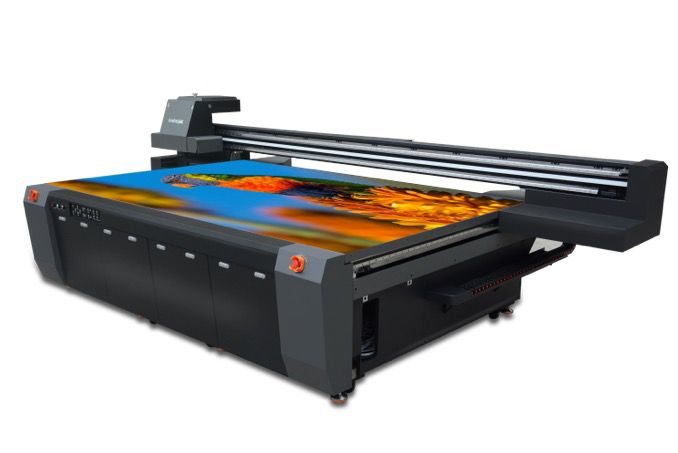Technical Aspects of Printing on Leather With a UV Flatbed Printer
Technical Aspects of Printing on Leather With a UV Flatbed Printer
Printing on leather using a UV flatbed printer presents unique challenges and opportunities compared to traditional printing materials such as paper or fabric. The technical aspects involved in this process encompass a range of considerations, including ink selection, printer capabilities, pretreatment requirements, and post-printing handling. This article explores the intricacies of printing on leather with a UV flatbed printer, highlighting the key technical factors that contribute to achieving high-quality and durable prints.

1. Introduction to UV Flatbed Printing on Leather
UV flatbed printers utilize ultraviolet (UV) light to cure ink instantly after it is applied to the material. This technology allows for precise control over ink deposition and rapid drying, making it ideal for printing on non-porous surfaces like leather. The ability to print directly onto leather without the need for transfer papers or additional adhesives offers several advantages, including improved print quality, faster production times, and enhanced durability.
2. Ink Selection and Compatibility
One of the critical technical aspects of printing on leather is selecting the appropriate ink. UV-curable inks are specifically designed to adhere to a wide range of substrates, including leather, and to cure rapidly under UV light. These inks are typically formulated to be flexible, abrasion-resistant, and capable of withstanding the natural stretch and movement of leather without cracking or fading.
When choosing inks for leather printing, it is essential to consider factors such as color gamut, opacity, and adhesion properties. Leather’s unique texture and porosity can affect ink absorption, necessitating inks that can penetrate the surface slightly to ensure a strong bond while maintaining a smooth and even appearance.
3. Printer Capabilities and Settings
UV flatbed printers are equipped with various features that facilitate printing on leather. Adjustable print heads allow for precise control over ink deposition, ensuring that the ink is applied evenly across the leather’s surface. Additionally, advanced printers offer variable dot size and ink density settings, enabling printers to achieve fine details and a wide range of visual effects.
To optimize print quality on leather, printer settings such as print speed, ink flow, and UV lamp intensity must be carefully adjusted. Slower print speeds may be necessary to ensure proper ink adhesion and curing, while adjusting ink flow can help manage the ink’s penetration into the leather’s surface.
4. Pretreatment Requirements
Pretreatment of leather is a crucial step in preparing it for UV flatbed printing. Leather is a natural material with inherent variations in texture, porosity, and finish, which can affect ink adhesion and print quality. Pretreatment helps to create a uniform surface for the ink to adhere to, improving print durability and overall appearance.
Common pretreatment methods include cleaning the leather surface to remove dirt and oils, applying a primer or adhesion promoter to enhance ink bonding, and possibly using a topcoat to protect the printed design and enhance gloss or matte effects. The choice of pretreatment products and methods will depend on the specific leather type, ink system, and desired print outcome.
5. Print Resolution and Detail
Achieving high print resolution and detail on leather is essential for producing visually appealing and professional-grade prints. UV flatbed printers capable of high-resolution printing can reproduce intricate designs and fine text with clarity. However, the leather’s texture and porosity can impact print resolution, potentially requiring adjustments to the printer’s settings or the design itself to ensure optimal results.
When designing graphics for leather printing, it is advisable to use vector-based artwork to maintain sharpness and scalability. Raster images should be provided at high resolutions to minimize pixelation and ensure smooth gradients and transitions.
6. Post-Printing Handling and Durability
After printing, leather products may require additional handling to ensure durability and longevity. UV-cured inks are generally resistant to fading, scratching, and water, but post-printing processes such as heat setting or the application of protective topcoats can further enhance these properties.
Heat setting involves exposing the printed leather to controlled temperatures, which helps to fix the ink more securely to the material and improve its resistance to cracking or peeling. Protective topcoats can be applied to provide an additional layer of defense against wear, abrasion, and environmental factors such as UV exposure and moisture.
7. Environmental and Safety Considerations
UV flatbed printing on leather, like any industrial printing process, must also consider environmental and safety aspects. UV-curable inks are generally considered more environmentally friendly than solvent-based inks due to their low volatile organic compound (VOC) emissions. However, proper handling and disposal of ink, cleaning agents, and other consumables are essential to minimize environmental impact.
Safety measures should also be in place to protect operators from potential hazards associated with UV light exposure and ink handling. This includes using appropriate personal protective equipment (PPE), maintaining a safe working environment, and adhering to recommended exposure limits.
Conclusion
Printing on leather with a UV flatbed printer offers a versatile and efficient method for producing high-quality, durable prints with intricate details and vibrant colors. By carefully considering ink selection, printer capabilities, pretreatment requirements, post-printing handling, and environmental and safety aspects, leather products can be enhanced with unique and eye-catching designs that meet the demands of various applications, from fashion accessories to upholstery and more. As technology continues to advance, the potential for UV flatbed printing on leather will only continue to grow, offering exciting new possibilities for creativity and innovation in the leather industry.
